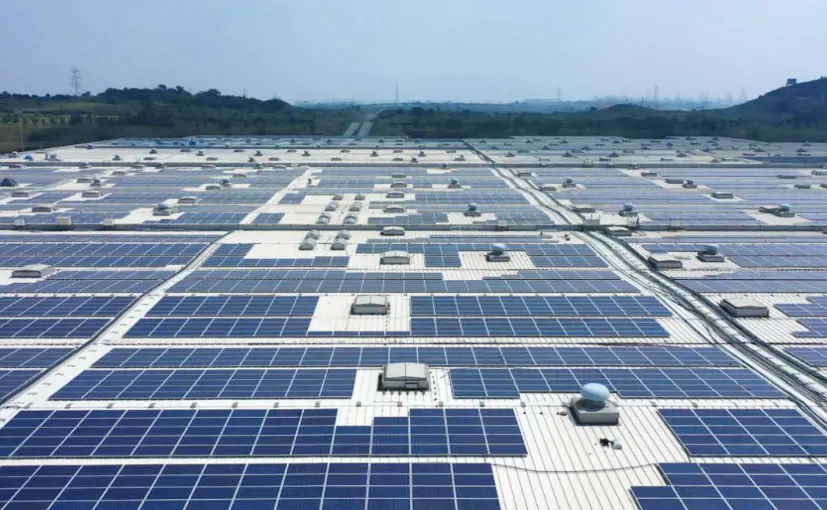India is likely to add a record-high 4 GW of rooftop solar capacity in fiscal year (FY) 2024, half of which has already been installed in the four months ending July this year, according to a new joint report by the Institute for Energy Economics and Financial Analysis and JMK Research & Analytics.
The report finds that the capacity addition in the April-July period of FY 2024 was nearly 2 GW, slightly less than the amount added in FY 2023. Falling solar module costs will likely help sustain the growth momentum in the near-to-medium term.
“For India to attain its target of 500 GW of renewable energy by 2030, solar and its verticals (including utility-scale, rooftop solar, and open access) will all have to play a crucial role,” said the report’s co-author Vibhuti Garg, director, South Asia, IEEFA.
“As countries like Germany and Australia demonstrate, with the right policy and regulatory environment, rooftop solar can be a game changer for greening the overall national energy mix.”
Despite the recent growth, the report finds that the rooftop solar market faces significant regulatory challenges.
“Regulatory uncertainties and lack of support from local electricity distribution companies (DISCOMs) have forced prominent developers to either focus on other segments or exit the rooftop solar business altogether,” said co-author Jyoti Gulia, founder of JMK Research.
Gujarat, Andhra Pradesh, Telangana, and the union territory of Delhi have the most favorable ecosystems for commercial & industrial (C&I) customers setting up rooftop solar projects. But, several other states need to push rooftop solar.
“Several states are moving away from net metering to lesser beneficial gross metering and net billing arrangements. This has led to C&I consumers shifting focus to other greening options, such as open access,” said co-author Kapil Gupta, Manager, JMK Research.
“The Green Open Access Rules, 2022 gave smaller C&I consumers access to off-site solar power. Going forward, consumers will prefer off-site open access, especially in states like Uttar Pradesh and Tamil Nadu with net metering restrictions for C&I consumers,” he adds.
The report recommends that policymakers consider creating separate renewable purchase obligations for rooftop solar to boost the market. States should also allow behind-the-meter rooftop solar systems as they can help DISCOMs forecast their load schedule. The central government should issue uniform regulatory provisions, similar to the Green Open Access Rules.
The report authors expect the next growth phase in rooftop solar to come from MSMEs. While the market for large creditworthy commercial & industrial (C&I) customers for rooftop solar is saturated, micro, small, and medium enterprises (MSMEs) offer a significant untapped potential of around 15 GW.
Financers have only now started to develop products to cater to the MSME segment.
This year, the World Bank will likely approve and announce a credit guarantee mechanism to limit the risk exposure of financial institutions lending to MSMEs. The scheme will involve a $100 million payment guarantee fund covering up to 50% of the debt financing amount from participating financial institutions to a grid-connected rooftop solar project.
“Given the emerging financing avenues, we believe the next growth phase in the rooftop solar market will come from this segment,” says co-author Prabhakar Sharma, Consultant, JMK Research.
The report recommends strictly enforcing solar procurement targets for accelerating rooftop solutions with MSMEs.
The report also finds that adopting battery energy storage systems (BESS), virtual net metering and peer-to-peer trading will boost the rooftop solar market. As states start to adopt Time of Day pricing, coupling rooftop solar with BESS for the C&I segment will increasingly make more economic sense.
“Through virtual net metering, consumers at different locations can aggregate and source rooftop solar power from a single, large solar plant. This increases the effective site availability suitable for deploying rooftop solar. It also gives such projects access to better financing terms,” said Sharma.
In P2P trading, consumers in the same DISCOM jurisdiction can trade excess solar power. It is an alternative to net metering and allows energy consumers to become energy prosumers. For DISCOMs, it reduces distribution losses and excess solar power purchases and offers a potential new revenue stream through charges and fees for energy traded in P2P.
This content is protected by copyright and may not be reused. If you want to cooperate with us and would like to reuse some of our content, please contact: editors@pv-magazine.com.









By submitting this form you agree to pv magazine using your data for the purposes of publishing your comment.
Your personal data will only be disclosed or otherwise transmitted to third parties for the purposes of spam filtering or if this is necessary for technical maintenance of the website. Any other transfer to third parties will not take place unless this is justified on the basis of applicable data protection regulations or if pv magazine is legally obliged to do so.
You may revoke this consent at any time with effect for the future, in which case your personal data will be deleted immediately. Otherwise, your data will be deleted if pv magazine has processed your request or the purpose of data storage is fulfilled.
Further information on data privacy can be found in our Data Protection Policy.